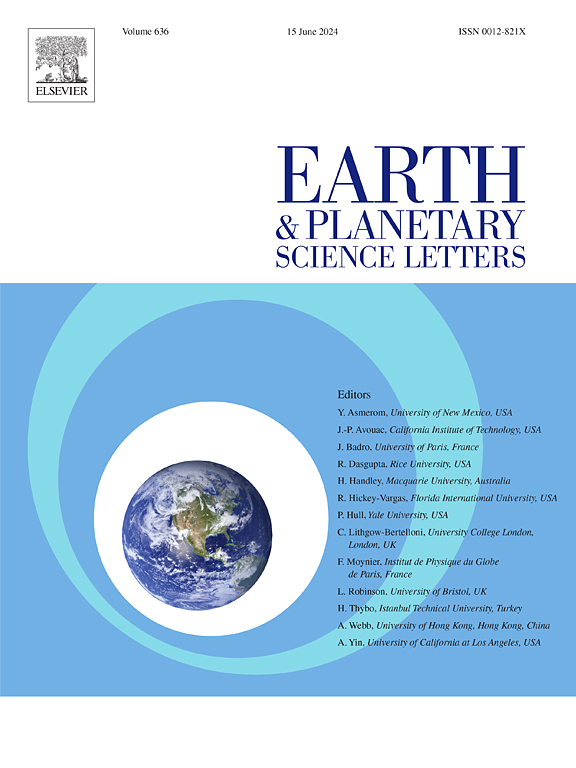Carbon, nitrogen, and noble gas isotopes reveal deep volatile signatures in thermal springs in the Central Volcanic Zone (CVZ) of the Andes
IF 4.8
1区 地球科学
Q1 GEOCHEMISTRY & GEOPHYSICS
引用次数: 0
Abstract
In subduction zones, thermal springs release deeply-sourced volatiles from Earth's mantle, crust, and/or subducted slab-derived material. The origin and apparent ages of these volatiles are important for understanding the deep volatile cycle, which in turn affects the distribution of microbial life in the subsurface. Here, we report carbon (13C, 14C), noble gas (He, Ne, Ar, Kr and Xe), and clumped nitrogen isotope data in gas and water samples from thermal springs within the Central Volcanic Zone (CVZ) of the Andean Convergent Margin (ACM). He isotopes show that CVZ gases are predominantly sourced from the crust (∼77 %), with smaller mantle contributions (∼23 %), consistent with previous studies from the CVZ. Thermal spring samples with non-atmospheric He-Ne characteristics have low 14C activities, and are deeply derived (i.e., from the mantle and crust) and old (>22,000 years). To gain additional constraints on volatile sources, a gas sample from Pirquitas Argentina was analyzed using a new high-precision technique to reveal significant geogenic anomalies in argon (40Ar/36Ar = 492), fissiogenic xenon (88 % crustal), and helium (84 % crustal) isotopes. Clumped N2 isotopologue results also indicate that the N2-rich Pirquitas sample is dominated by crustal and magmatic N2, which was unambiguously released at high temperatures (indicated by Δ30 of ∼0‰). When taken together, all carbon, noble gas and clumped N2 isotope data from CVZ thermal springs point toward a predominantly crustal source of volatile elements, which is consistent with the thick crust beneath the arc. We conclude that thermal springs with noble gas isotopic evidence for minimal air contributions are old, suggesting that any microbial communities entrained in them are also supported by deeply-derived and old organic carbon.
求助全文
约1分钟内获得全文
求助全文
来源期刊

Earth and Planetary Science Letters
地学-地球化学与地球物理
CiteScore
10.30
自引率
5.70%
发文量
475
审稿时长
2.8 months
期刊介绍:
Earth and Planetary Science Letters (EPSL) is a leading journal for researchers across the entire Earth and planetary sciences community. It publishes concise, exciting, high-impact articles ("Letters") of broad interest. Its focus is on physical and chemical processes, the evolution and general properties of the Earth and planets - from their deep interiors to their atmospheres. EPSL also includes a Frontiers section, featuring invited high-profile synthesis articles by leading experts on timely topics to bring cutting-edge research to the wider community.
 求助内容:
求助内容: 应助结果提醒方式:
应助结果提醒方式:


